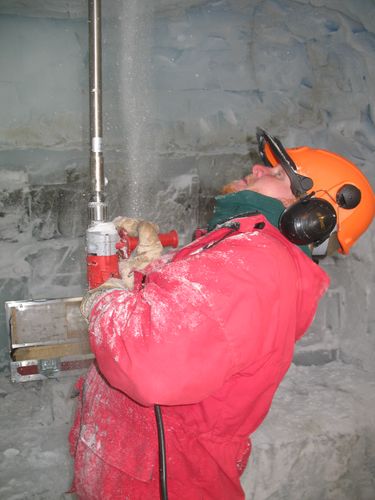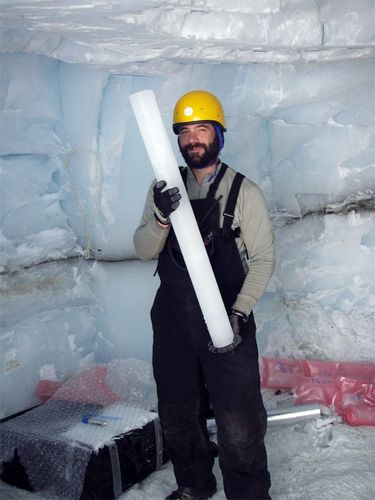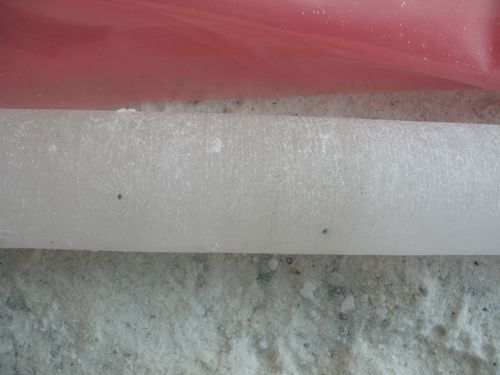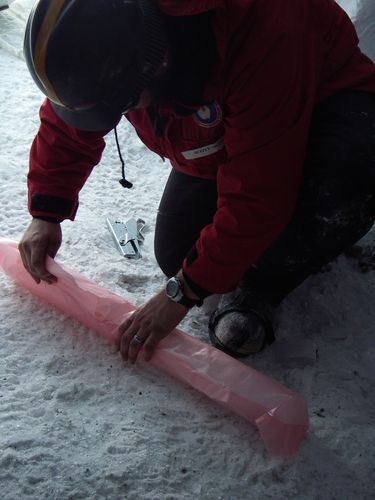Today was the last day that we took ice samples from the glacier. Tim and Scott are taking clean ice cores of the glacier to answer the questions; What is the age of the ice and What was going on when the ice formed? If they can better understand the glacial processes that were going on when the ice formed that we are sampling, it will help us better understand the microbiology and chemistry of the ice. Usually when you take cores you are on top of what you are drilling and you auger/drill downwards, but Tim and Scott are drilling upwards towards the top of the glacier from inside the glacier. As far as we know, no one has ever done that before and it was cool to see how excited they were when it worked. It was also fun to watch because all of the ice shavings fall on your head when you are holding the drill. The boys were covered in snow by the time they finished. In the end they had collected a 4.5m profile of clean ice. The cores are awesome and actually really beautiful. In the profile you can see all the gas bubbles trapped in the ice and light bands of sediment.

Watch the Boys Take Some Ice Cores
http://


As we looked at the profiles, the boys were coming up with all kinds of ideas for questions they wanted to test with their new cores. When they get back to Montana State University they will be looking at the chemistry of the ice. Some of the tests they are going to perform on the ice include the isotope analysis of water and the gas isotope analysis of O2, N2, and argon. They are also going to measure the concentrations of CO2, methane, oxygen, nitrogen, argon, and 20 - 30 other elements on the periodic table. Another cool thing that they are going to measure is the amount of black carbon in the ice. Black carbon is the solid pieces of carbon suspended in the ice and usually when scientists study black carbon in the ice it is to look at human impacts during the ice formation. Black carbon is a lot like soot and scientists can see events like the start of the industrial revolution in the ice. The ice that we are looking at is a little different because the black carbon isn't caused by humans. Our ice is way too old for that. The black carbon that is found in our ice could be from other organisms or from rock debris. There is so much to be done with the ice, they will just have to anxiously await the arrival of their ice back to Montana State University in April.





Comments